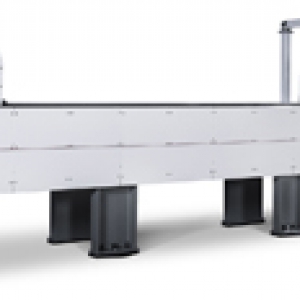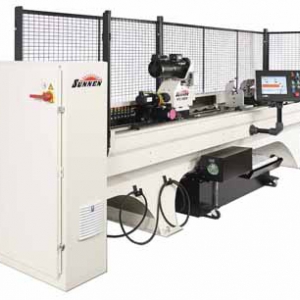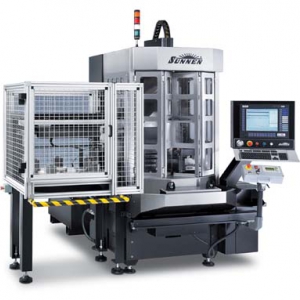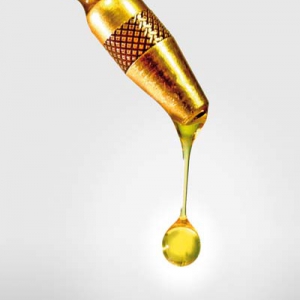Contact Details

Sunnen Product Co.'s new HTD tube hone delivers a 16m (52') stroke, and handles parts up to 1,000mm (39") in diameter. An electronically controlled, 30-kW (40.23-hp) spindle motor powers stock removal of 2,500 cm3/hr. (150 in3/hr.) for fast, accurate honing of helicopter driveshafts, marine driveshafts, submarine periscopes, downhole oil drilling components, cannon barrels, bimetallic tubes and hydraulic cylinders. The machine corrects bore geometry and size errors, as well as product-specific surface finishes and crosshatch angles to ensure correct sliding/sealing surfaces between mating parts. The HTD uses an operator-friendly Windows-based controller for optimal control of bore geometry with functions for stroke position, motion, stone feed and cutting pressure. The HTD is particularly suited for controlling taper variation and drift in long bores, using Sunnen's double- and triple-banked tools. Available abrasives include aluminum oxide, silicon carbide, CBN and diamond honing stones Six-tube hone models from Sunnen can do light-duty repair and resurfacing work to high-power, high-metal-removal applications on long, large parts. These machines handle bore diameters from 3mm to 1,000mm, with stroke lengths of 2m to 14.5m, providing stock-removal rates of 130 cc/hr. to 2,500cc/hr.
Related Glossary Terms
- aluminum oxide
aluminum oxide
Aluminum oxide, also known as corundum, is used in grinding wheels. The chemical formula is Al2O3. Aluminum oxide is the base for ceramics, which are used in cutting tools for high-speed machining with light chip removal. Aluminum oxide is widely used as coating material applied to carbide substrates by chemical vapor deposition. Coated carbide inserts with Al2O3 layers withstand high cutting speeds, as well as abrasive and crater wear.
- cubic boron nitride ( CBN)
cubic boron nitride ( CBN)
Crystal manufactured from boron nitride under high pressure and temperature. Used to cut hard-to-machine ferrous and nickel-base materials up to 70 HRC. Second hardest material after diamond. See superabrasive tools.
- feed
feed
Rate of change of position of the tool as a whole, relative to the workpiece while cutting.









 PRODUCTS
PRODUCTS

